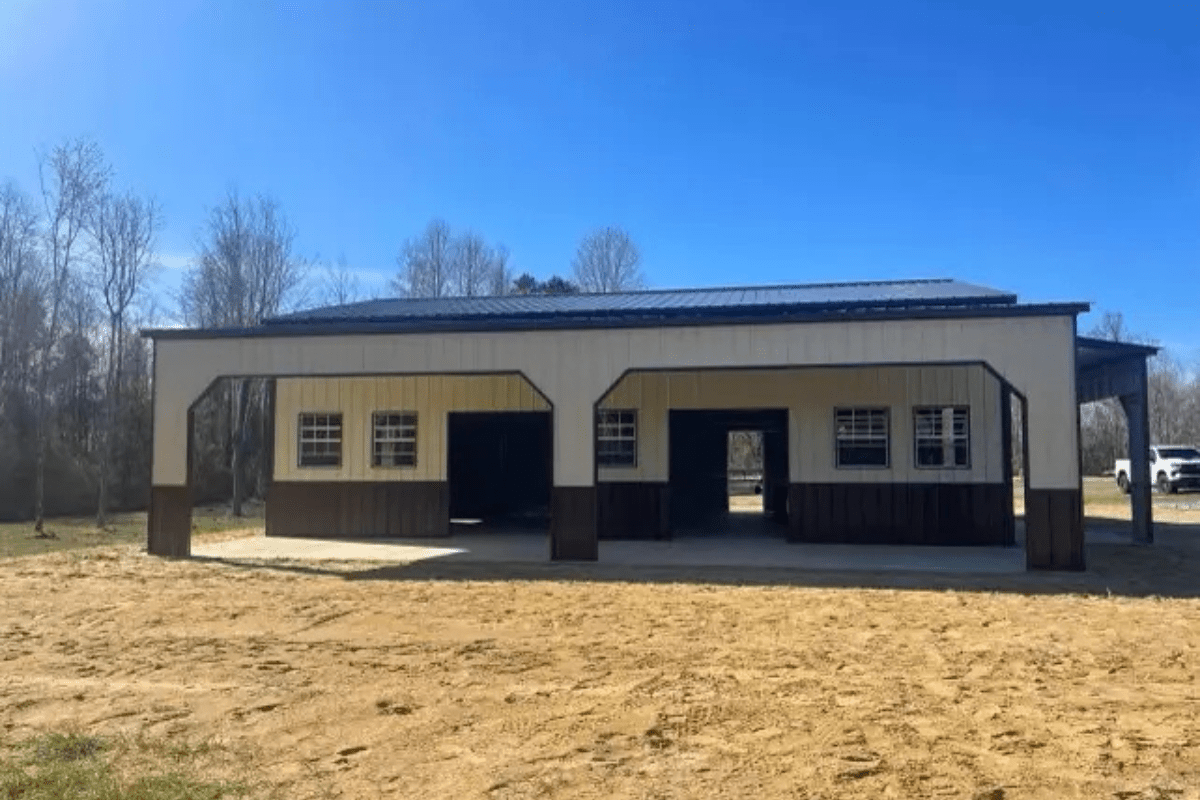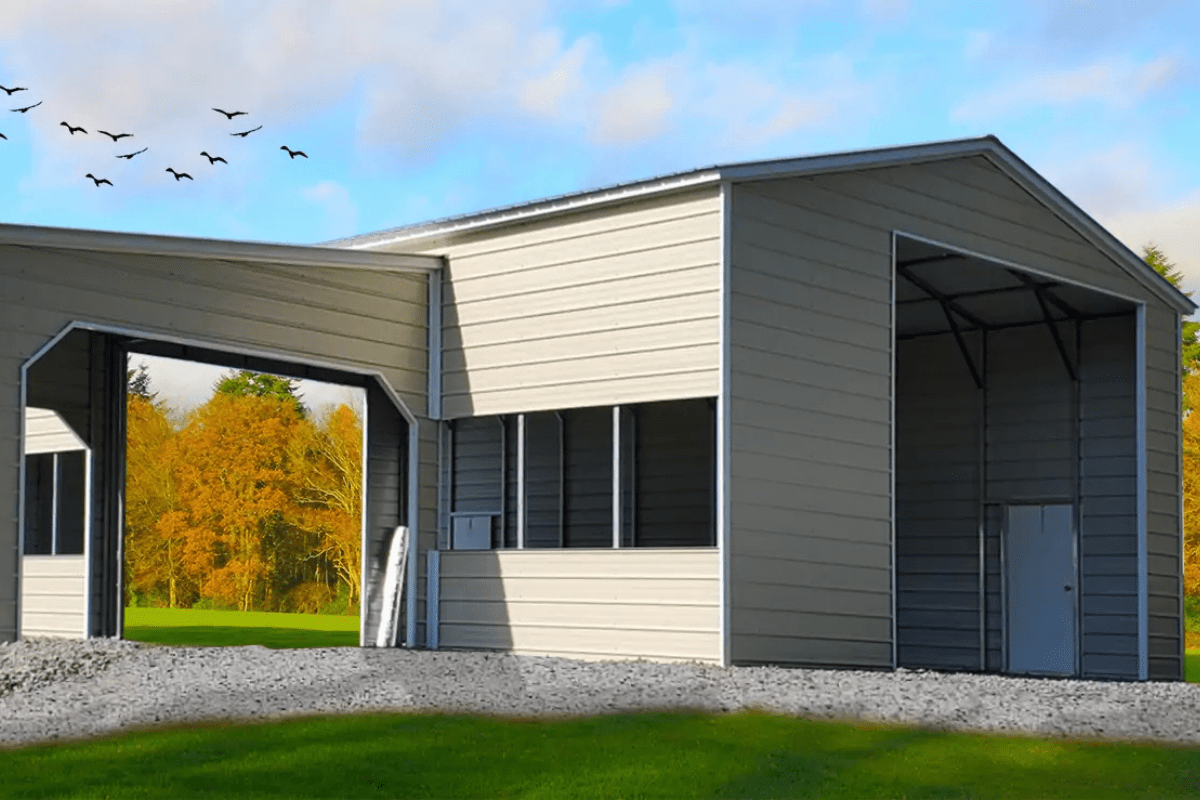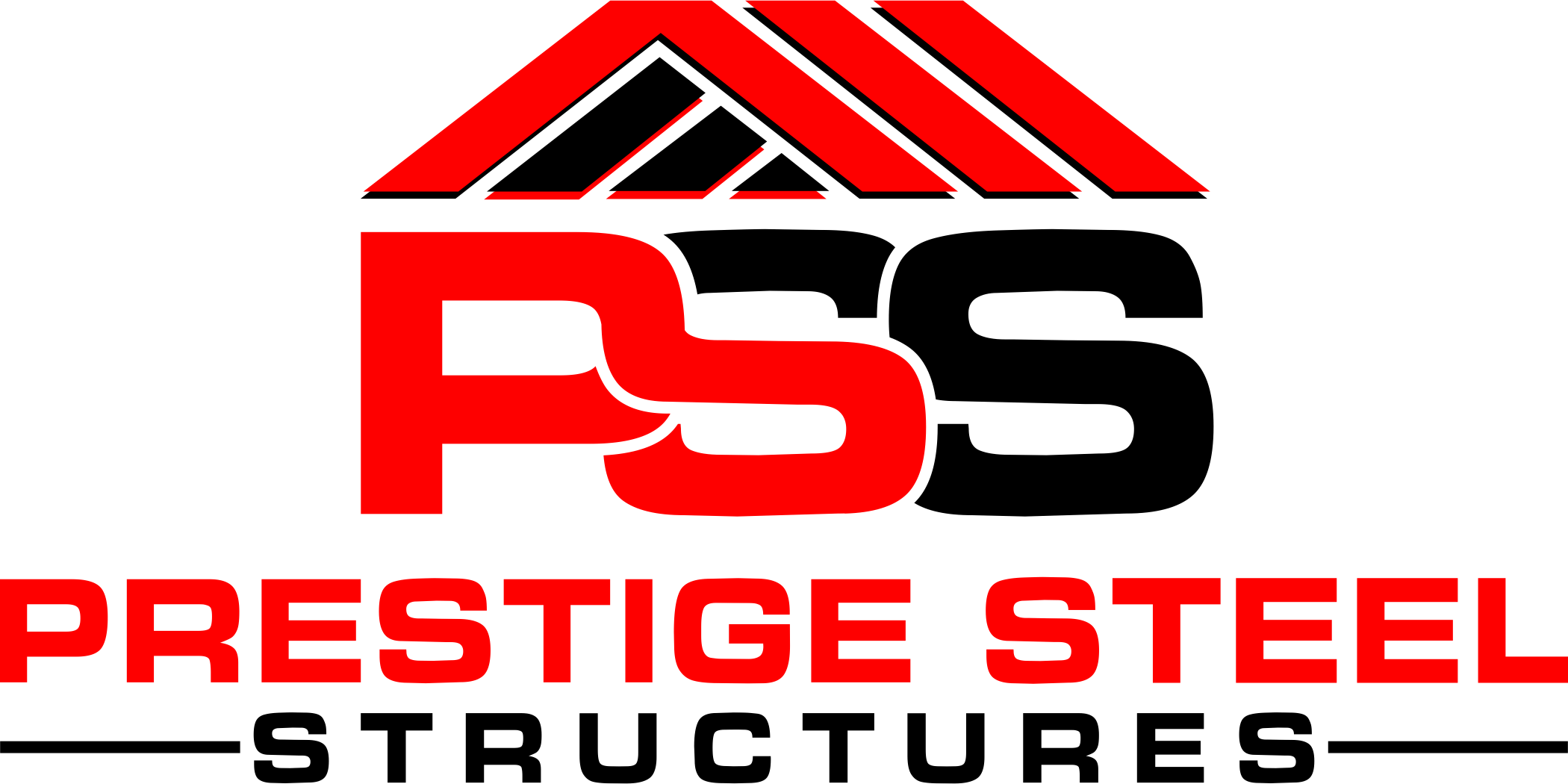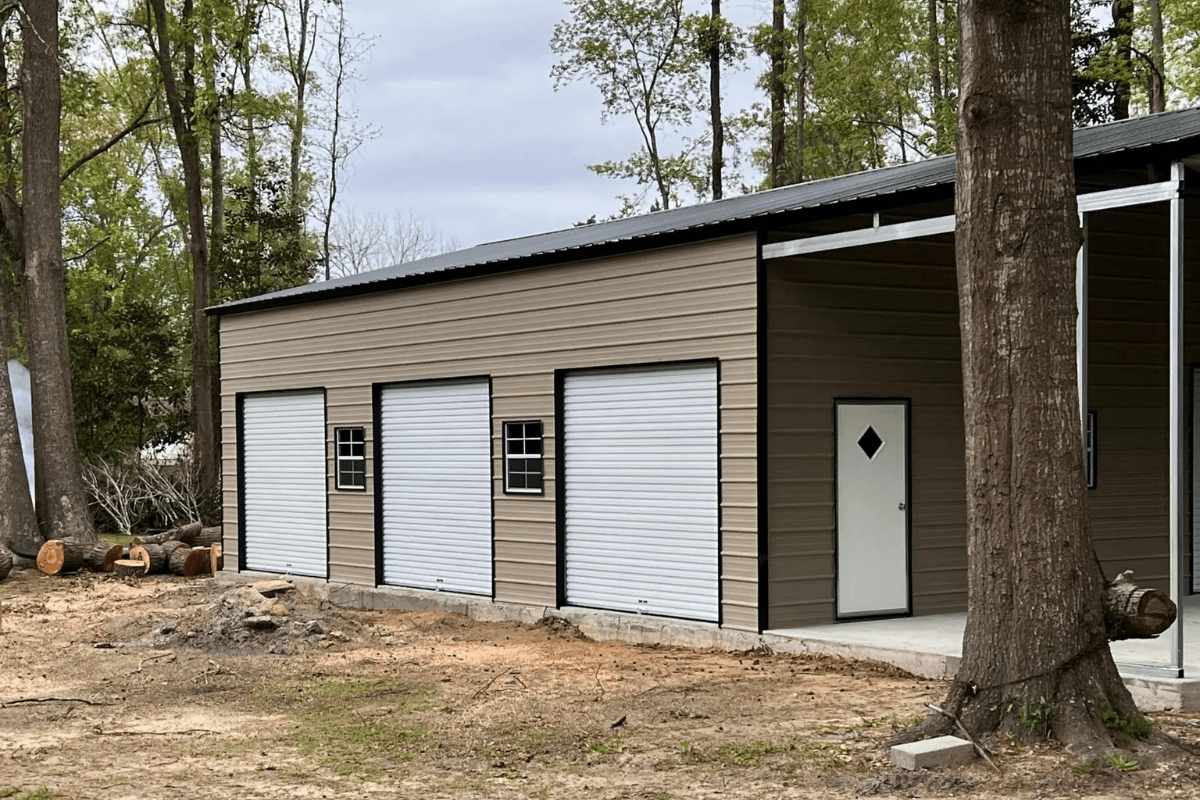As the construction industry evolves, metal buildings are becoming essential for sustainable building practices. Steel structures offer more than just durability; they reduce environmental impact by minimizing waste, improving energy efficiency, and aligning with green building standards. Whether you’re designing a custom workshop, carport, warehouse, or industrial facility, choosing a metal building means making a smart investment in both performance and sustainability.
Steel’s versatility allows builders to meet modern needs while reducing their carbon footprint, ensuring that every structure plays a role in creating a greener future. Let’s explore how metal buildings are transforming the way we build—and why they’re the top choice for eco-conscious projects.

Why Metal Buildings Are Environmentally Friendly Choices
From energy savings to recyclability, metal buildings excel in areas where traditional construction methods fall short. These structures contribute to sustainable development by reducing resource consumption and minimizing the need for regular maintenance. Their adaptability makes them ideal for a range of projects—whether it’s a residential carport, a commercial storage facility, or a large industrial structure.
The eco-friendly benefits of metal buildings make them an excellent choice for builders, developers, and homeowners who want to meet green standards while saving on long-term costs. Choosing steel construction means investing in a solution that balances strength, sustainability, and efficiency.
Less Waste During Construction with Metal Buildings
One of the biggest environmental challenges in construction is waste management. However, steel buildings solve this problem by streamlining the construction process from start to finish.
- Precision Manufacturing: Every piece of steel is manufactured to exact specifications, which drastically reduces waste and ensures easy assembly on-site.
- Minimal Waste: Compared to wood or concrete, steel generates far fewer offcuts during construction. Materials that are leftover or unused can easily be repurposed.
- 100% Recyclable: One of the standout features of steel is its recyclability. Leftover materials are collected, melted down, and reused, supporting the circular economy.
Traditional materials like wood can’t offer the same benefits, as offcuts are often discarded in landfills. With steel buildings, construction sites stay cleaner and produce less waste, creating a more sustainable process from start to finish.
Energy-Smart Green Design in Steel Buildings
Energy efficiency is built into every aspect of metal buildings, making them ideal for reducing operational costs and environmental impact. These buildings take full advantage of smart design principles to stay energy-efficient year-round.
- Cool Roof Systems: Metal roofs with reflective coatings or white panels bounce sunlight away, lowering the internal temperature and reducing air conditioning use by up to 40%.
- Solar Panel Integration: Metal roofs are solar-ready, making it easy to install panels and harness renewable energy. Solar power generated from these systems lowers energy costs and offsets the building’s carbon footprint.
- Advanced Insulation: While steel is conductive, insulation systems placed inside walls, floors, and ceilings minimize heat transfer and create a stable indoor environment.
These energy-saving features, along with weather-tight doors and windows, help metal buildings stay efficient even in extreme climates. With reduced energy consumption, steel structures not only lower operating costs but also support sustainable energy use.
Environmental Resistance: Durability of Steel Buildings
The natural durability of metal buildings ensures that they remain functional and attractive for decades, requiring minimal maintenance. This long lifespan reduces the need for repairs and replacements, making them an environmentally responsible choice.
- Mold and Mildew Resistance: Steel structures don’t absorb moisture, eliminating the risk of mold and bacterial infestations that compromise air quality.
- Weather Resilience: Metal buildings can withstand harsh weather conditions, including hurricanes, heavy snowfall, thunderstorms, and high winds. This durability makes them ideal for areas prone to extreme weather.
- Minimal Maintenance: Unlike wood, which requires regular treatments to prevent decay, steel buildings maintain their integrity without chemical treatments, reducing long-term environmental impact.
By choosing steel buildings, owners benefit from lower maintenance costs and reduced downtime, while also contributing to sustainable building practices. These structures minimize material waste over their lifespan, making them a reliable and eco-friendly choice.
Green Building Standards for Metal and Steel Structures
Meeting green building standards has never been easier than with metal buildings. These structures align naturally with the requirements of environmental programs, making it simple to comply with sustainability regulations.
- Certification Programs: Metal buildings meet the criteria for programs like the US Green Building Council (LEED) and the National Green Building Program. Their energy-efficient design and durability make it easier to achieve these certifications.
- Compliance with New Regulations: As cities adopt stricter carbon footprint regulations, steel structures ensure compliance by reducing waste and emissions during construction and throughout the building’s lifecycle.
- Demonstrating Sustainability: Choosing a metal building shows a commitment to eco-conscious construction. Companies that invest in sustainable practices not only meet regulatory requirements but also build a positive brand reputation.
This proactive approach helps companies and builders stay ahead of environmental trends while ensuring they meet future green building standards.

Metal and Steel Buildings: The Smart, Sustainable Choice
When it comes to sustainable construction, steel buildings offer unmatched advantages. Their durability, energy efficiency, and low environmental impact make them the top choice for builders, homeowners, and developers alike.
- Recyclable Materials: Steel can be recycled endlessly without losing its strength, reducing the need for virgin materials and supporting eco-friendly building practices.
- Industry Innovation: The steel industry continues to innovate by finding ways to reduce emissions and adopt greener manufacturing processes.
- Long-Term Benefits: Choosing steel ensures a building with lower maintenance needs, a longer lifespan, and reduced energy costs—benefits that continue well into the future.
Whether you’re building a garage, workshop, warehouse, or storage facility, metal buildings help reduce your environmental footprint without compromising quality.
Final Thoughts: Building a Stronger, Greener Tomorrow
With their strength, energy efficiency, and minimal waste production, metal buildings are transforming the construction industry. These structures are designed not only to meet today’s needs but also to create a more sustainable future. By embracing steel, builders and companies position themselves at the forefront of eco-conscious construction.
Contact Prestige Steel Structures today to explore a wide range of metal building solutions that align with your sustainability goals. Together, let’s build stronger, greener communities.
Key Takeaways
- Precision Engineering: Steel components are manufactured with minimal waste and can be recycled indefinitely.
- Energy Efficiency: Cool roofs and solar-ready designs reduce energy consumption while enhancing comfort.
- Environmental Durability: Metal buildings resist mold, mildew, and harsh weather, minimizing maintenance needs.
- Green Compliance: Steel structures align naturally with modern green building standards and certifications.
- Sustainable Investment: With long-term durability and minimal upkeep, metal buildings reduce environmental impact over their lifespan.
Frequently Asked Questions About Metal Buildings
- Are metal buildings eco-friendly?
Yes, metal buildings are eco-friendly because they generate minimal waste, are fully recyclable, and offer excellent energy efficiency. - What makes steel a sustainable material?
Steel is sustainable because it can be recycled indefinitely, uses fewer natural resources, and has a long lifespan with minimal environmental impact. - How do metal buildings improve energy efficiency?
They reduce energy use through reflective cool roofs, high-performance insulation, and solar-ready roofing systems. - Can steel buildings withstand extreme weather?
Yes, steel buildings are engineered to handle hurricanes, heavy snow, and strong winds, making them ideal for harsh climates. - Do metal buildings require a lot of maintenance?
No, metal buildings are low-maintenance, resisting rust, mold, and decay without chemical treatments. - What are the environmental benefits of metal buildings?
Metal buildings reduce construction waste, lower carbon emissions, and require fewer resources over time. - How do steel buildings reduce long-term environmental impact?
They require fewer repairs, generate less waste, and use less energy, supporting sustainable building practices.


